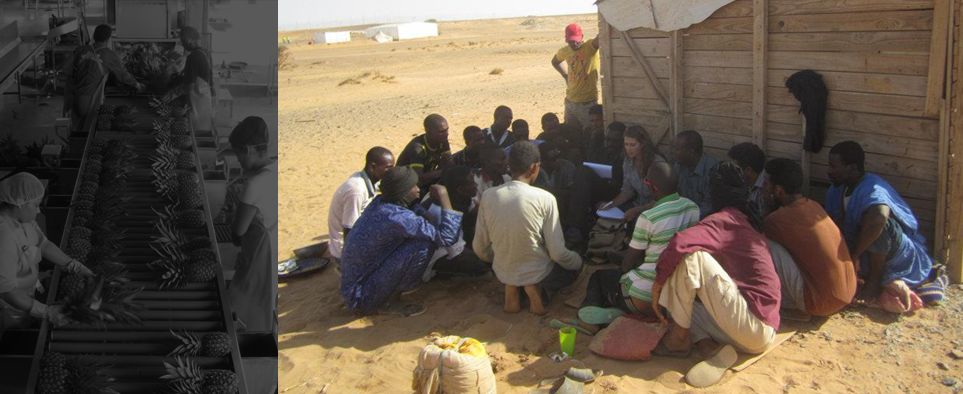Hastings Airport is a hangar flanked by wingless, motorless crashed airplanes. To pay airport tax, you have to actively seek out an airport authority. My plane, a LET140 had 14 seats and could go no higher than 14,000 feet (legally). It had 2 propellers and, in my case, three pilots. Ray, James and Neil thought I looked like James’ daughter, so they gave me daughter-of-pilot treatment and let me flick switches, twist steering wheels and gaze out the windshield as we approached the landing strip, a dirt field flanking the town market. A Sierra Rutile (SRL) guard was driving a truck around the “strip” just before we landed, chasing goats off, I later learned.
That guard, a Rhodesian (no, not Zimbabwean) military man who hopped over to south Africa’s defense force when Mugabe took power, has a glass eye, a severe dent on his forehead and a rugged, tough-guy disdain for the project manager. As we drove through villages to the mine headquarters, he pointed out which communities had held him hostage and which dredge sites were underperforming while observing that Sisay knows none of this because he can’t seem to stay away from Freetown for more than a couple of days (“there are no discotheques down here”). I had been trying to figure out how the project manager scored himself such a high powered job… turns out the company’s owner adopted him as a kid, funding his education and employing him at nearly every job he’s ever had.
The roads are substantially better than any around Freetown (graded constantly by SRL), but few people have cars, and there’s not a petrol station for miiiiiiiiiiiiiiles (so theft from company vehicles and machines is substantial). Half of the villages between the landing strip and the mine are mud-stick-thatch huts. The other half are cinderblock and tin roof houses, and everyone who’s not a miner is a farmer. Many people are both.
I spent most of the day with a mine planner who stayed here during most of the war but fled to Freetown when the RUF raided the mine, sprinting to the port under grenade fire and bullets, where SRL’s rutile barges piled employees on and headed to Freetown. The RUF followed them north less than 2 weeks later, using SRL vehicles to travel from the mine to the capital. The real looting didn’t happen till ECOMOG (west African troops, mostly from Nigeria) came in. They loaded up trucks with washing machines, televisions, and whole silos worth of food (RUF just took walkie talkies and stuff they could carry in pockets). Then kamajors (usually described as “tribal” fighters who thought joined them, committing at least as many atrocities as the RUF did) came in, and national military, and…
People around rutile said they preferred the RUF to those who came after. At least, that’s what the mine planner tells me. He was one of the first to come back in 2000. Housing and office buildings were bombed out. Everything was overrun by jungle. Much of the mining camp is still that way – we drove down ‘roads’ that only remain as small chunks of pavement every few meters, visiting houses that have no roofs and vines growing through windows. Also, strangers around the community were wearing his shirts. Locals, too, joined in the looting (anarchy + extreme poverty = …)
Today a tour of the mines. This afternoon, a conversation with SRL’s former employee and harshest critic, a guy named Leslie.


